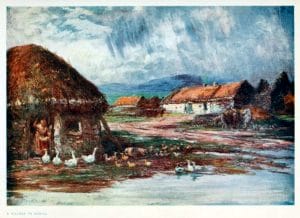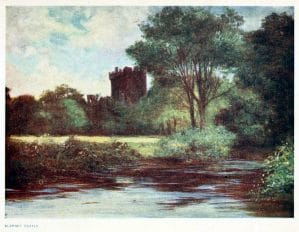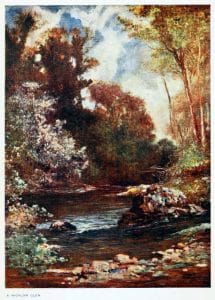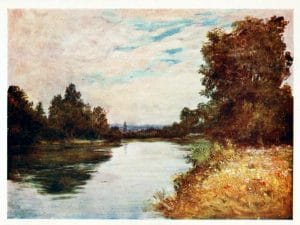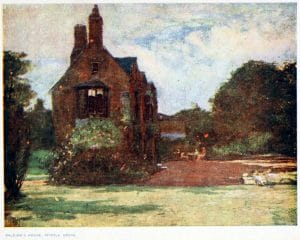For St. Patricks Day, I went on a hunt for some really cool vintage illustrations of Ireland. I was hoping to find something from the 19th or early 20th century, and low and behold, I struck gold! At the turn of the century, writer Katherine Tynan traveled to Ireland where she visited such Iconic Irish locations as Dublin, Cork, Galway and Donegal. She published her travels in the 1911 book, Ireland, now in the public domain, and featured brilliant landscape illustrations by Francis S. Walker. I created the gallery below by collecting and editing some of my favorite illustrations from the book.
The original images had more of a sepia tone, so I used Pixlr to enhance those lush greens and blues instead.
While writing this post, I become more and more curious about Prehistoric Ireland too and included some fun facts about historical Ireland below.
Fun Facts about Ancient Ireland!
- In the Neolithic Period, gigantic burial structures and monuments were erected in Ireland and were thought to be the tombs of royal court members.
- An important figure in Irish Folklore, Iron Age Queen, Maeve, is believed to be buried on Knocknarea Mountain. According to Irish Folklore legend, Queen Maeve invaded the area of Ulster to steal an infamous bull from her enemies.
- Ancient Ireland is often known for its famous “peat bogs”. Made from dead plant material, especially moss plants, peat bogs are a type of wetland with the ability to preserve organic material extremely well. Over time, archeologists have discovered several preserved bodies in these wetlands.
- In the 12th century, the Norman Invasion of Ireland created more than 700 years of English rule over the Island. Before the invasion, Ireland consisted of several different kingdoms.
- The Shamrock Connection: According to Irish Folklore, the shamrock plant was actually sacred to the legendary Druids of ancient Ireland. During Ireland’s Iron age, the Druids consisted of artistic and academic individuals such as poets, doctors, scholars, and the spiritual leaders of communities.


